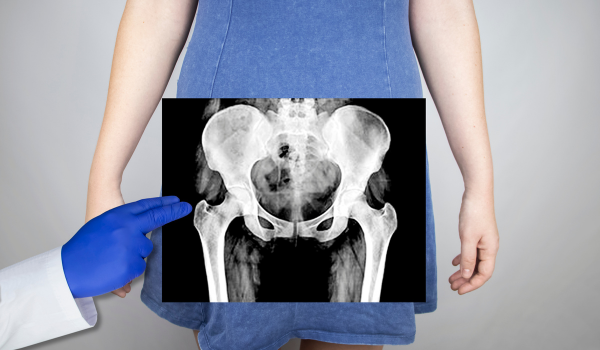.png)
Why Early Signs Matter
May-Thurner Syndrome (MTS), also known as iliac vein compression syndrome, is a condition that often goes unnoticed until serious complications—such as deep vein thrombosis (DVT)—occur. The early signs can be subtle, gradual, or easily mistaken for other issues like fatigue, muscle strain, or poor circulation.
Recognizing the initial symptoms of MTS is critical. Early diagnosis can prevent life-threatening complications and enable timely, effective treatment.
Understanding the Root Cause
MTS occurs when the right iliac artery compresses the left iliac vein, reducing blood flow from the left leg. This anatomical compression can lead to vein narrowing, blood pooling, and eventually clot formation.
The symptoms emerge gradually and are often worsened by prolonged standing, sitting, or activity. Understanding how these symptoms manifest helps individuals seek medical help before a clot forms.
Unilateral Leg Swelling
One of the earliest and most visible signs of May-Thurner Syndrome is swelling in the left leg—typically below the knee but sometimes involving the entire leg.
Key characteristics include:
-
Occurs on one side only (usually the left)
-
Develops slowly over time
-
Gets worse after long periods of standing
-
Improves with elevation or rest
Unlike generalized swelling from heart or kidney conditions, MTS swelling is usually isolated and persistent.
Leg Pain or Discomfort
Leg pain in MTS can range from a dull ache to sharp cramping. It's typically localized in the left thigh or calf and may feel worse after activity or at the end of the day.
People often describe:
-
Heaviness in the leg
-
Cramping or throbbing sensations
-
Pain that mimics a pulled muscle or nerve pain
-
Tenderness along the vein path
Pain often worsens in hot weather or during hormonal changes, such as menstruation or pregnancy.
Visible Vein Changes
May-Thurner can cause visible changes to veins in the affected leg, pelvis, or lower abdomen. These include:
-
Enlarged superficial veins (collateral circulation)
-
Varicose veins in unusual locations
-
Prominent veins in the lower stomach or groin
-
A bluish or purplish hue in the leg
These visible changes occur because the blood must find alternate pathways around the compression.
Skin Color Changes
Reduced blood flow and pooling can result in skin discoloration. Early signs may appear as:
-
Mild redness after activity
-
Patchy skin with a bluish or purplish tone
-
Mottling or uneven skin tone on the lower leg
Over time, chronic congestion may lead to permanent changes like hyperpigmentation or even skin thickening.
Leg Fatigue or Heaviness
A common yet under-recognized symptom is leg fatigue—especially in the left leg. It often occurs after:
-
Long walks or standing sessions
-
Exercise involving the lower body
-
Travel or immobility
The leg may feel “tired” or heavy, despite normal muscle strength. Patients often attribute this to poor circulation or inactivity, delaying proper diagnosis.
Worsening with Activity
Many early MTS symptoms are exercise-dependent. You might notice:
-
Symptoms worsen with movement and improve with rest
-
More pain or swelling after workouts
-
Discomfort when climbing stairs or walking uphill
-
Relief with leg elevation
This pattern—called “venous claudication”—can mimic peripheral artery disease but stems from impaired vein drainage.
Sensitivity to Heat
Heat dilates blood vessels, which can exacerbate venous congestion. Individuals with early MTS often notice:
-
Increased swelling during hot weather
-
Leg discomfort after hot showers or baths
-
Heat-induced heaviness or throbbing
These subtle reactions to temperature changes can signal early-stage vein compression.
Night Symptoms
Symptoms may persist or worsen at night due to lying flat and reduced leg elevation. This might result in:
-
Aching or cramping in bed
-
Restless legs
-
Needing to prop up the leg on pillows
-
Poor sleep quality due to leg discomfort
These nighttime disturbances are often overlooked as unrelated to vascular issues.
Clot Warning Signs
MTS can lead to deep vein thrombosis, which requires emergency care. Warning signs of early DVT may include:
-
Sudden increase in swelling or pain
-
Warmth over the calf or thigh
-
Red or discolored skin patches
-
Veins that feel hard or tender to the touch
If any of these symptoms occur, immediate medical attention is critical.
Delayed Wound Healing
In chronic cases of undiagnosed MTS, poor circulation can impair tissue health. Early indicators include:
-
Small wounds that take longer to heal
-
Increased bruising in the lower leg
-
Skin dryness or flakiness
These signs are often subtle and attributed to aging or poor skin care—but they could reflect venous dysfunction.
Menstrual and Pregnancy Fluctuations
Women may notice symptom fluctuations tied to hormonal changes. Estrogen influences vein walls, so:
-
Symptoms may worsen during menstruation
-
Pregnant women may experience sudden onset of swelling or pain
-
Leg discomfort may become prominent in the third trimester
These fluctuations are sometimes misdiagnosed as normal pregnancy swelling, delaying the correct diagnosis.
Recurring Leg Infections
Patients with MTS may be more prone to infections like cellulitis due to impaired lymphatic and venous drainage. Signs include:
-
Red, warm, swollen areas of skin
-
Painful inflammation that spreads
-
Fever or chills with leg symptoms
Recurring infections in the same leg should prompt an evaluation of underlying vein problems.
Inconsistent Symptom Patterns
MTS symptoms can vary in intensity from day to day. This inconsistency can delay diagnosis, as symptoms may:
-
Disappear during rest days
-
Flare up without clear reason
-
Mimic musculoskeletal issues
Still, if the symptoms follow a recurring pattern—especially with prolonged standing—an underlying vascular issue should be considered.
Misdiagnosis Risks
Early signs of MTS are often mistaken for:
-
Sciatica
-
Arthritis
-
Lymphedema
-
Muscular strain
Because MTS isn't widely known, patients can go months or years without a proper diagnosis, especially if their symptoms don’t include a blood clot.
When to Seek Help
You should consult a healthcare provider if you experience:
-
Persistent left leg swelling
-
Leg pain that worsens with activity
-
New varicose veins or visible abdominal veins
-
Skin changes or frequent leg cramps
Request a vascular evaluation if symptoms remain unexplained after initial assessment.
Diagnosis Tools
Common tools used to evaluate MTS symptoms include:
-
Doppler ultrasound: Good for detecting clots and flow irregularities
-
CT or MR venography: Offers a detailed view of pelvic vein compression
-
Intravascular ultrasound (IVUS): Best for confirming MTS during intervention
Early referral to a vascular specialist can make a big difference in outcomes.
Why Early Detection Saves Lives
Catching MTS early prevents the formation of clots, reduces the need for aggressive treatments, and improves long-term leg health. Benefits of early diagnosis include:
-
Avoiding DVT and pulmonary embolism
-
Preserving vein function
-
Preventing post-thrombotic syndrome
-
Minimizing lifestyle disruption
The longer MTS goes unaddressed, the greater the risk of irreversible complications.
What to Expect After Diagnosis
If caught early, MTS treatment is usually less invasive. Options may include:
-
Compression stockings
-
Anticoagulation therapy
-
Minimally invasive stenting
-
Catheter-guided clot removal (if DVT occurs)
Patients often resume normal activities shortly after treatment, with significant symptom improvement.
Self-Monitoring Tips
To track symptoms effectively, patients should:
-
Keep a daily log of leg swelling or discomfort
-
Take photos to document visible changes
-
Note any patterns linked to activity or menstruation
-
Discuss findings during doctor visits
Proactive symptom tracking helps refine diagnosis and guide treatment decisions.
Conclusion
May-Thurner Syndrome can be easy to overlook—but the consequences of ignoring early signs can be severe. Whether it’s subtle swelling, leg fatigue, or changes in skin tone, these symptoms offer important clues. Listening to your body and seeking help early can prevent serious complications like DVT.
Don't dismiss the signs—your leg discomfort may be telling you something far more serious.

.png)
.png)
.png)
.png)
.png)
.png)
.png)
.png)



